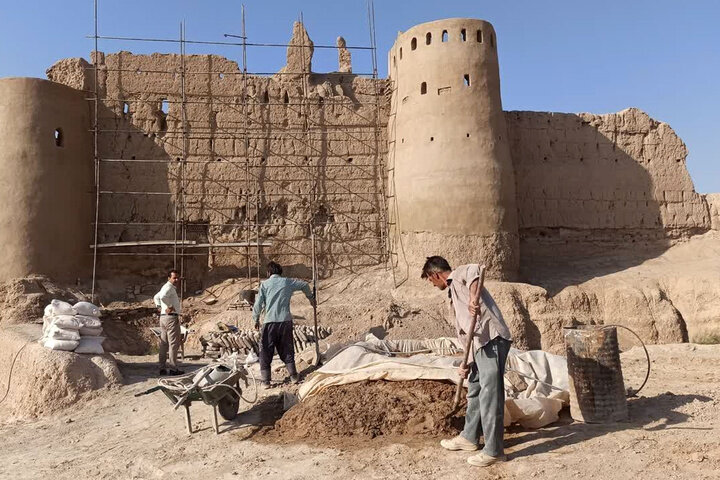Qale Narin restoration breathes new life into ancient stronghold

TEHRAN - A new phase of restoration work has begun on the centuries-old Qale Narin, which is a massive mud-brick fortress in the heart of Iran.
The structure is considered one of the oldest and most important historical sites within the boundaries of Nain in Yazd province.
According to the head of Nain’s office for Heritage, Tourism, and Handicrafts, Mahmoud Madanian, the fortress dates back to the Parthian era.
After significant efforts by local authorities, ownership of the site was transferred to the Ministry of Cultural Heritage, Tourism, and Handicrafts in 2016. This allowed for the commencement of restoration and preservation efforts in 2018, with a focus on safeguarding this valuable and monumental historical landmark.
Madanian announced that the new phase of restoration work will focus on the fortification and stabilization of the towers and walls on the eastern and northern sides of the fortress.
Skilled restoration experts from the region are overseeing the project, he added.
Qale Narin, which spans approximately 2,500 square meters, was originally used as a citadel and administrative-military center before the Islamic era. The site is listed as a national heritage site under registration number 4177.
Since antiquity, mankind has assumed the need to fortify properties to survive in an ever-changing world of invasion and conquest. Commencing from simple earthworks and wooden walls, fortifications gradually evolved into complex, unconquerable, imposing citadels.
Those strongholds were normally erected and maintained along significant routes and cities, particularly at heights overlooking steep slopes or cliffs. Many of the fortifications of the ancient world were built using mud brick, often leaving them no more than mounds of dirt for today’s archaeologists.
AM
Leave a Comment